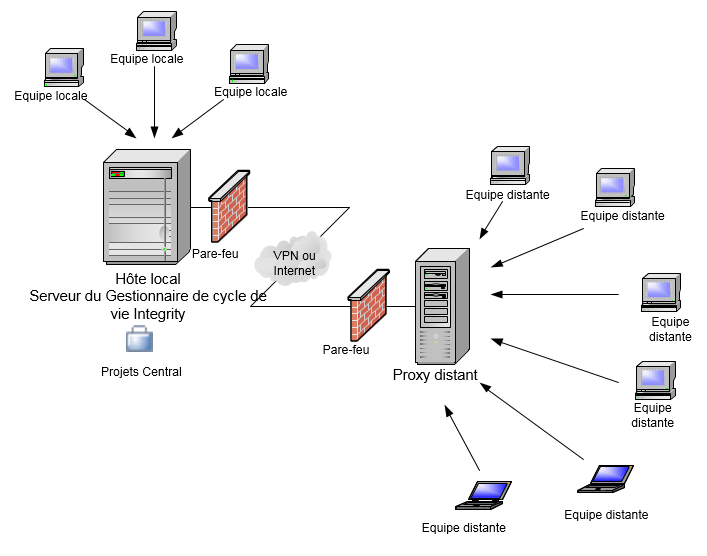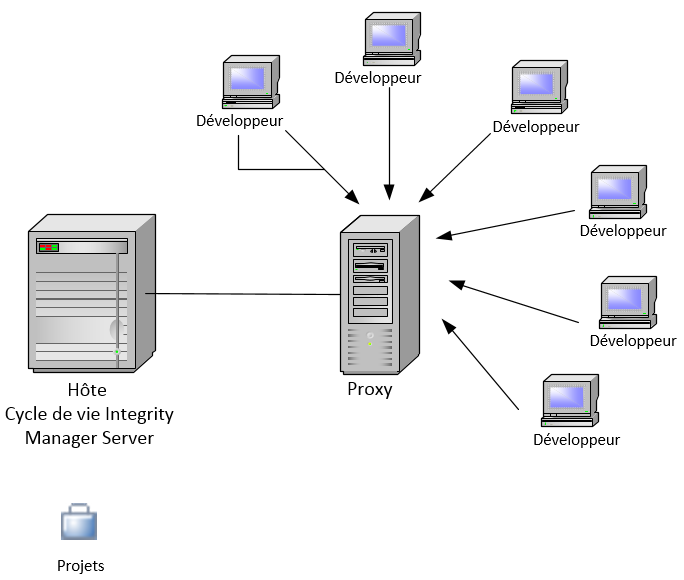Applications for FSA
FSA provides managers and development teams with the ability to successfully work in a distributed development organization. The real time remote access and improved network performance that FSA offers can be configured in many different ways to suit the needs of your organization.
Although the main configuration of FSA addresses the geographically dispersed organization, it can be implemented in other configurations to improve efficiency and address other requirements within an organization.
FSA is flexible and extensible providing numerous different ways it can be implemented. This topic introduces two possible configurations of FSA that address different needs. These configurations serve as examples only and do not represent all the implementations of FSA.
Geographically Dispersed Configuration
The geographically dispersed configuration is the typical development challenge that FSA addresses. In this configuration, remote users connect to a proxy that communicates through a firewall with the centralized projects on the local (host) server. Remote users may be geographically distributed at field offices, travelling, or working from home.
The following diagram illustrates the FSA implementation for a typical geographically dispersed configuration.
A single network connection over a VPN or the Internet provides access to central projects for the remote team. Remote users interact at LAN speeds with their primary access port.
Internal Load Distribution Configuration
Internal load distribution is a configuration of FSA used at a single site to relieve the load on a central server or backbone network with the use of proxies. For example, a development team of users can use a proxy to connect to the main server at their site to increase efficiency and reduce the server load.
The following diagram illustrates the FSA implementation for a typical Internal Load Distribution configuration.
Network traffic and central server load is dramatically reduced by distributing clients/users over departmental subnets.


